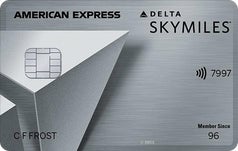Like any branded airline card, the Alaska Airlines Visa card is excellent for frequent flyers of its respective airline, Alaska Airlines. It can be an ideal choice for customers of the airline who take annual or semi-annual trips because it includes generously boosted rewards rates and has some key perks that help you save.
Companion flights: For a friend or family member
You can earn a companion fare code when you spend $6,000 in one year with the Alaska Airlines Visa card ($99 fare plus taxes and fees from $23). This can be a great way to recoup your annual fee.
While spending $6,000 on your travel card is no easy task, it might help to look at this offer as an opportunity to save hundreds of dollars on a trip you’re sure to take each year. For instance, the average one-way Alaska Airlines fare hovers around $250 (before taxes). If you spend $6,000 in one year to earn this promotion and use the promotional code to cover companion airfare worth $250, then you’re looking at a return of roughly 4 percent, which rivals the cash back rate on some of the best cash back credit cards.
Rewards: Boosted rewards for flights and some recurring purchases
Cardholders can earn 3X miles on flights and 2X miles on eligible gas, EV charging stations, cable, streaming services and transit. In the right hands, these modestly boosted rewards categories can bring a healthy sum of miles. Regarding co-branded airline cards, 3X miles seems to be the standard among cards with comparable annual fees. You can also receive a 10 percent boost to your earned miles if you have an eligible Bank of America account.
Alaska Airlines also has a decent rewards program, with miles coming in at an estimated value of 1.1 cents, according to Bankrate’s latest valuations. This valuation isn’t exceptional, but it is more than you might expect on other cards and is far from the least valuable among airline miles. Plus, you’ll earn them at generously boosted rates, so your miles will stack quickly.
Welcome offer: Solid value with a little effort
While it may require some precise planning, the recent update to the Alaska Airlines Visa's limited-time online bonus has added significant value to the card. You can earn 50,000 bonus miles for spending $3,000 in your first 90 days with the card and snag a sweet "buy one, get one" deal on airfare (must pay taxes and fees).
Depending on how you use this flight can determine how valuable this welcome offer is. The miles with the welcome offer can be worth $550, based on the valuation of 1.1 cents, which is good value, but you can really boost the value of this offer by cashing in your buy one, get one offer on pricey airfare.
Perks: Free checked bags with priority boarding
Several credit cards include free checked bags, but not all have free checked bags for up to six people on the same reservation, something the Alaska Airlines Visa can boast. The only card that comes out ahead for this perk is the Delta SkyMiles® Gold American Express Card, which offers a free checked bag on Delta flights for up to eight additional people on the same reservation. But if you’re a loyal Alaska Airlines customer, there is no replacement for the value that this card carries for multi-person reservations.
Plus, this card has priority boarding for as long as you’re a cardholder. Although this perk isn’t a huge value play, it can help ease tension in the airport and get you onto your plane and into your seat before most of the overhead bag space is cluttered.









